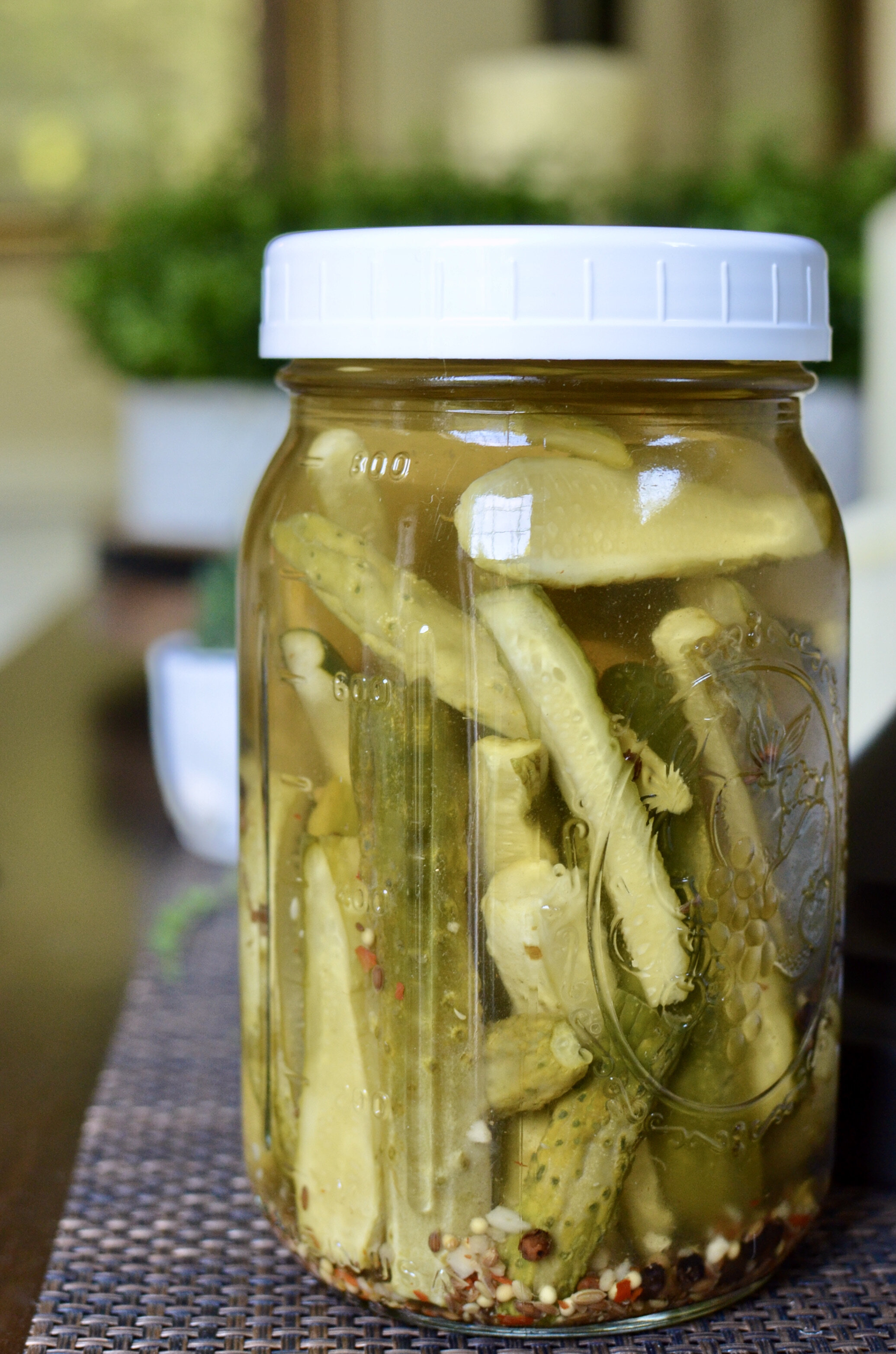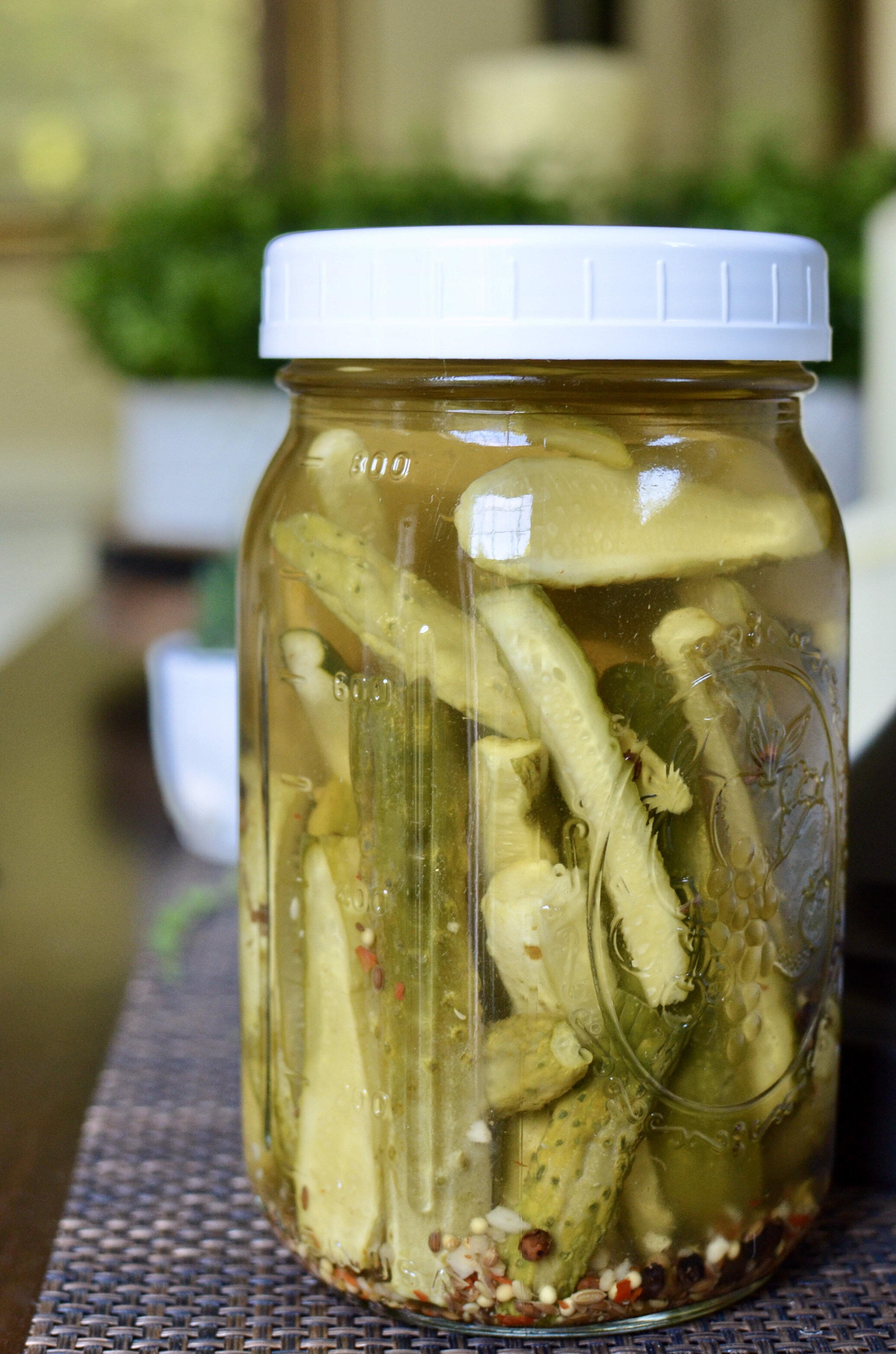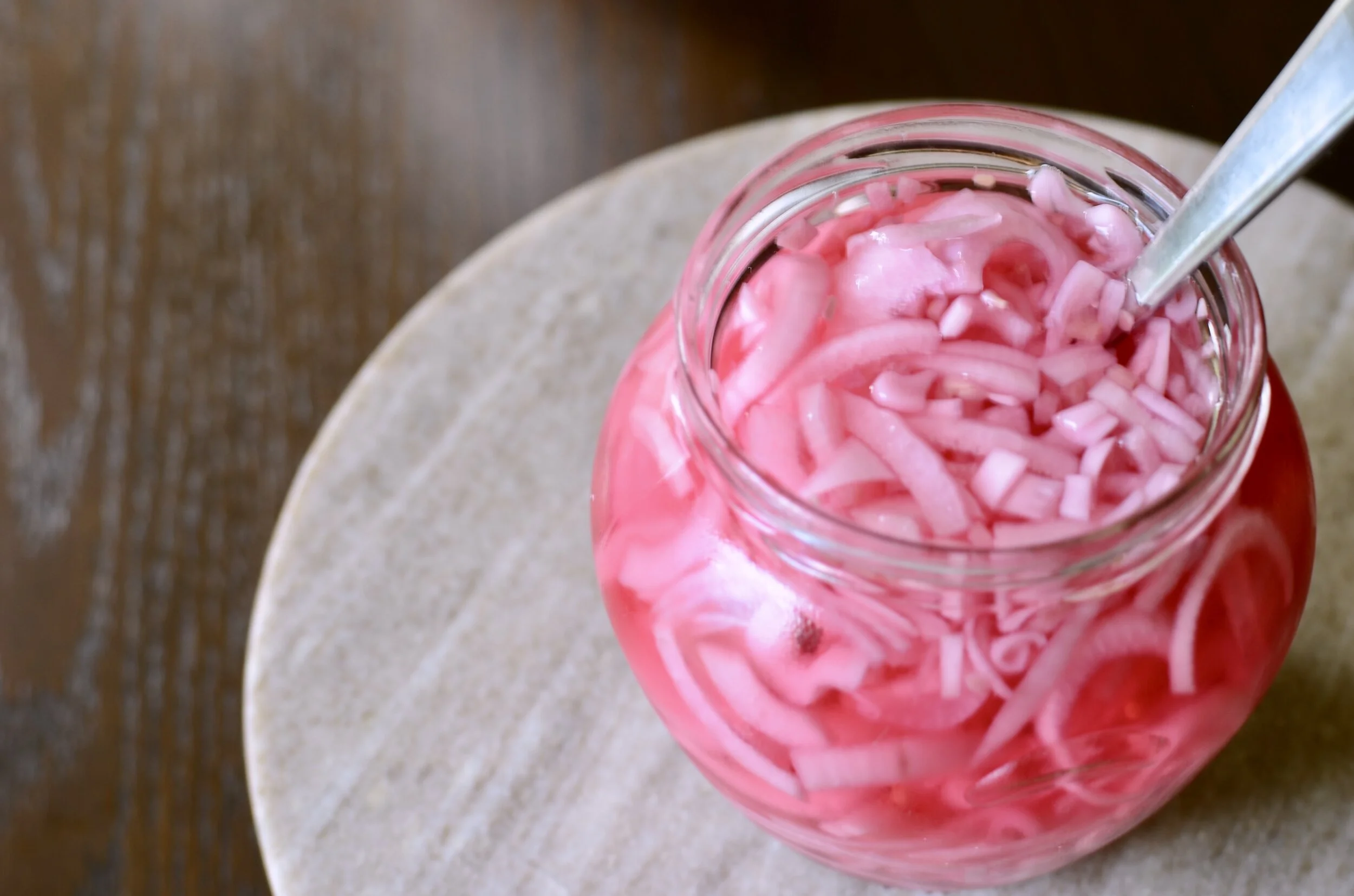Small Batch Pickled Jalapeños
Patricia @ ButterYum
Small Batch Pickled Jalapenos
makes one 16-ounce jar
Printable Recipe
Ingredients
4-5 jalapeños, washed and sliced into 1/8th-inch thick slices
1 whole clove garlic, peeled (optional)
1/2 cup water
1/2 cup white distilled vinegar
2 1/2 tablespoons white granulated sugar
1 1/2 teaspoon table salt
Directions
Place sliced jalapeños and whole garlic clove in a jar that has a tight fitting lid.
In a small saucepan, heat water, vinegar, sugar, and salt; stirring until salt and sugar dissolve (mixture does not need to boil).
Pour warm liquid into jar to cover jalapeños.
Let jar sit at room temperature for 30-60 minutes before closing and storing in the fridge for up to two months.
Note
Feel free to mix in some red Jalapeno or Fresno slices. The colorful mix looks beautiful in the jar.










